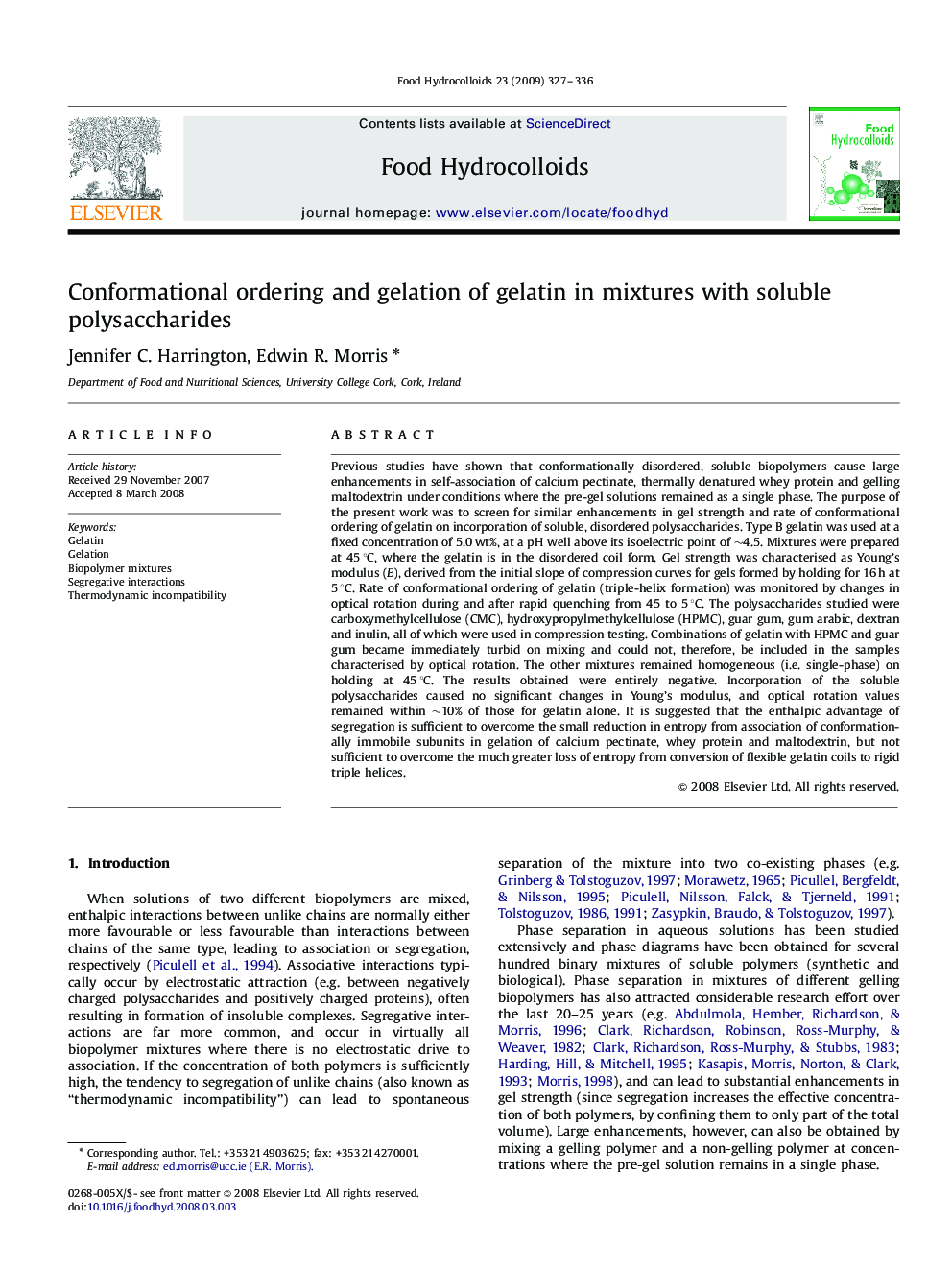| کد مقاله | کد نشریه | سال انتشار | مقاله انگلیسی | نسخه تمام متن |
|---|---|---|---|---|
| 604946 | 880329 | 2009 | 10 صفحه PDF | دانلود رایگان |

Previous studies have shown that conformationally disordered, soluble biopolymers cause large enhancements in self-association of calcium pectinate, thermally denatured whey protein and gelling maltodextrin under conditions where the pre-gel solutions remained as a single phase. The purpose of the present work was to screen for similar enhancements in gel strength and rate of conformational ordering of gelatin on incorporation of soluble, disordered polysaccharides. Type B gelatin was used at a fixed concentration of 5.0 wt%, at a pH well above its isoelectric point of ∼4.5. Mixtures were prepared at 45 °C, where the gelatin is in the disordered coil form. Gel strength was characterised as Young's modulus (E), derived from the initial slope of compression curves for gels formed by holding for 16 h at 5 °C. Rate of conformational ordering of gelatin (triple-helix formation) was monitored by changes in optical rotation during and after rapid quenching from 45 to 5 °C. The polysaccharides studied were carboxymethylcellulose (CMC), hydroxypropylmethylcellulose (HPMC), guar gum, gum arabic, dextran and inulin, all of which were used in compression testing. Combinations of gelatin with HPMC and guar gum became immediately turbid on mixing and could not, therefore, be included in the samples characterised by optical rotation. The other mixtures remained homogeneous (i.e. single-phase) on holding at 45 °C. The results obtained were entirely negative. Incorporation of the soluble polysaccharides caused no significant changes in Young's modulus, and optical rotation values remained within ∼10% of those for gelatin alone. It is suggested that the enthalpic advantage of segregation is sufficient to overcome the small reduction in entropy from association of conformationally immobile subunits in gelation of calcium pectinate, whey protein and maltodextrin, but not sufficient to overcome the much greater loss of entropy from conversion of flexible gelatin coils to rigid triple helices.
Journal: Food Hydrocolloids - Volume 23, Issue 2, March 2009, Pages 327–336